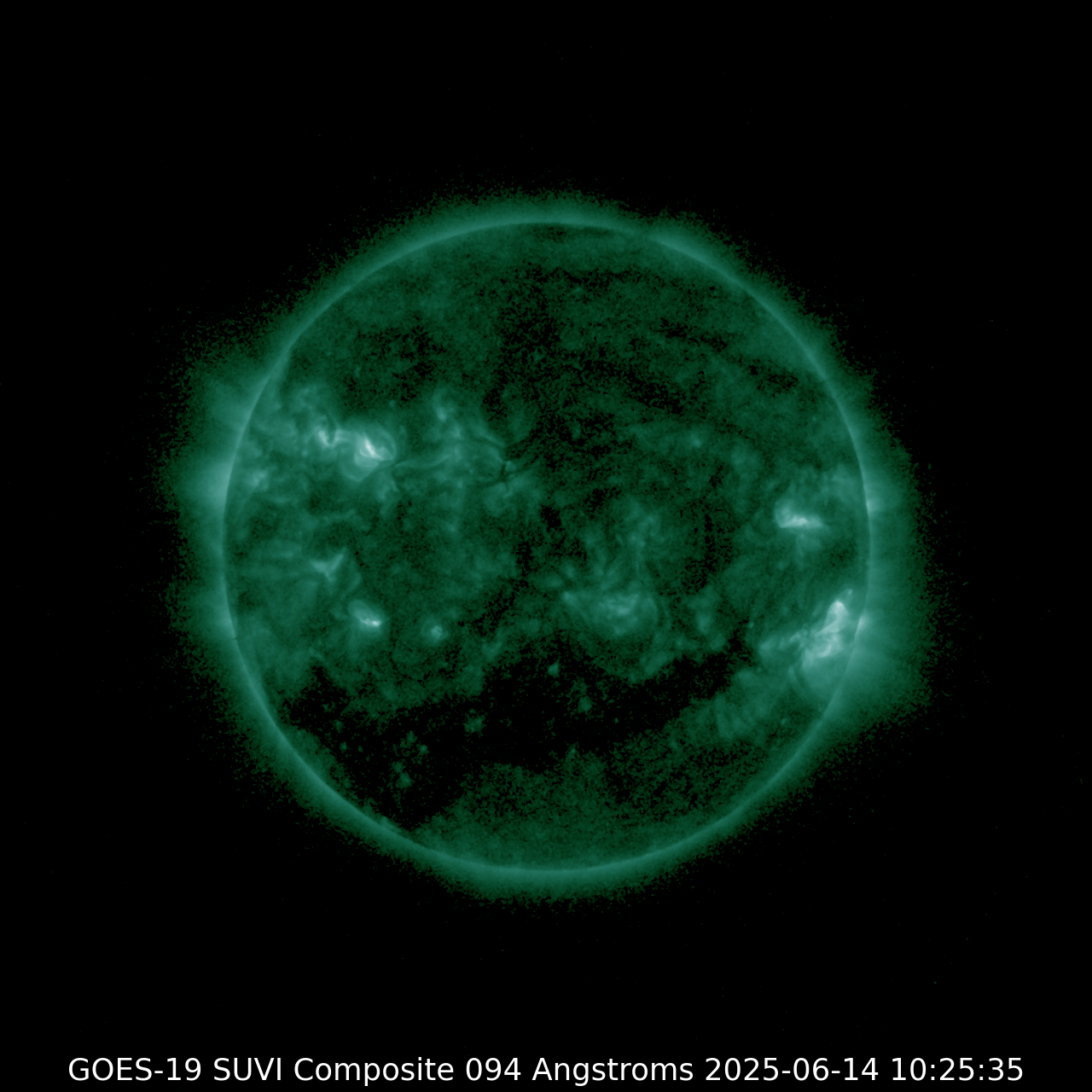Geostationary Operational Environmental Satellite (GOES)
The Geostationary Operational Environmental Satellite system (GOES) are a series of geosynchronous satellites operated by the United States’ National Oceanic and Atmospheric Administration. The GOES system provides us with solar imagery, magnetometer data, solar X-ray data and data on high energy solar protons at Earth. Below you will find solar imagery at a multitude of wavelengths from a number of different GOES missions.
GOES-19 CCOR-1
The Compact Coronagraph-1 (CCOR-1) instrument on board of GOES-19, will image the Sun in the visible wavelength range from 480nm to 730nm. In order to image the much fainter corona, the CCOR-1 instrument will use an occulting disk to block the light originating from the much brighter photosphere of the Sun. As a result, the field of view for CCOR-1 will span from 3.7 solar radii out to 17 solar radii with a spatial resolution of ~50 arcseconds.
GOES-18
GOES-19
Latest news
Latest forum messages
Support SpaceWeatherLive.com!
A lot of people come to SpaceWeatherLive to follow the Solar activity or if there is a chance to see the aurora, but with more traffic comes higher costs to keep the servers online. If you like SpaceWeatherLive and want to support the project you can choose a subscription for an ad-free site or consider a donation. With your help we can keep SpaceWeatherLive online!
Space weather facts
| Last X-flare | 2025/12/08 | X1.1 |
| Last M-flare | 2025/12/20 | M1.0 |
| Last geomagnetic storm | 2025/12/12 | Kp5 (G1) |
| Spotless days | |
|---|---|
| Last spotless day | 2022/06/08 |
| Monthly mean Sunspot Number | |
|---|---|
| November 2025 | 91.8 -22.8 |
| December 2025 | 120.8 +29 |
| Last 30 days | 108.7 +19.4 |



















